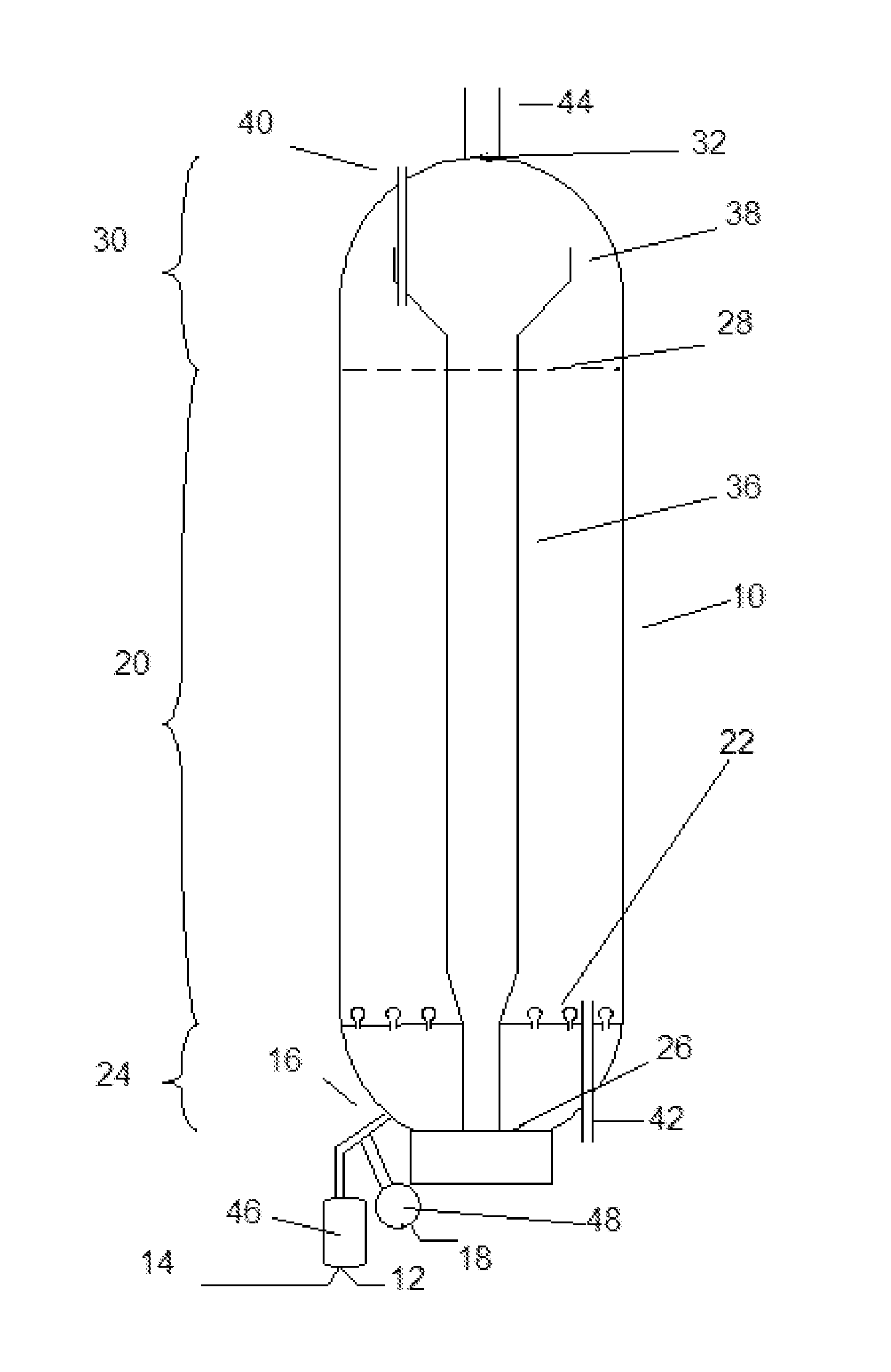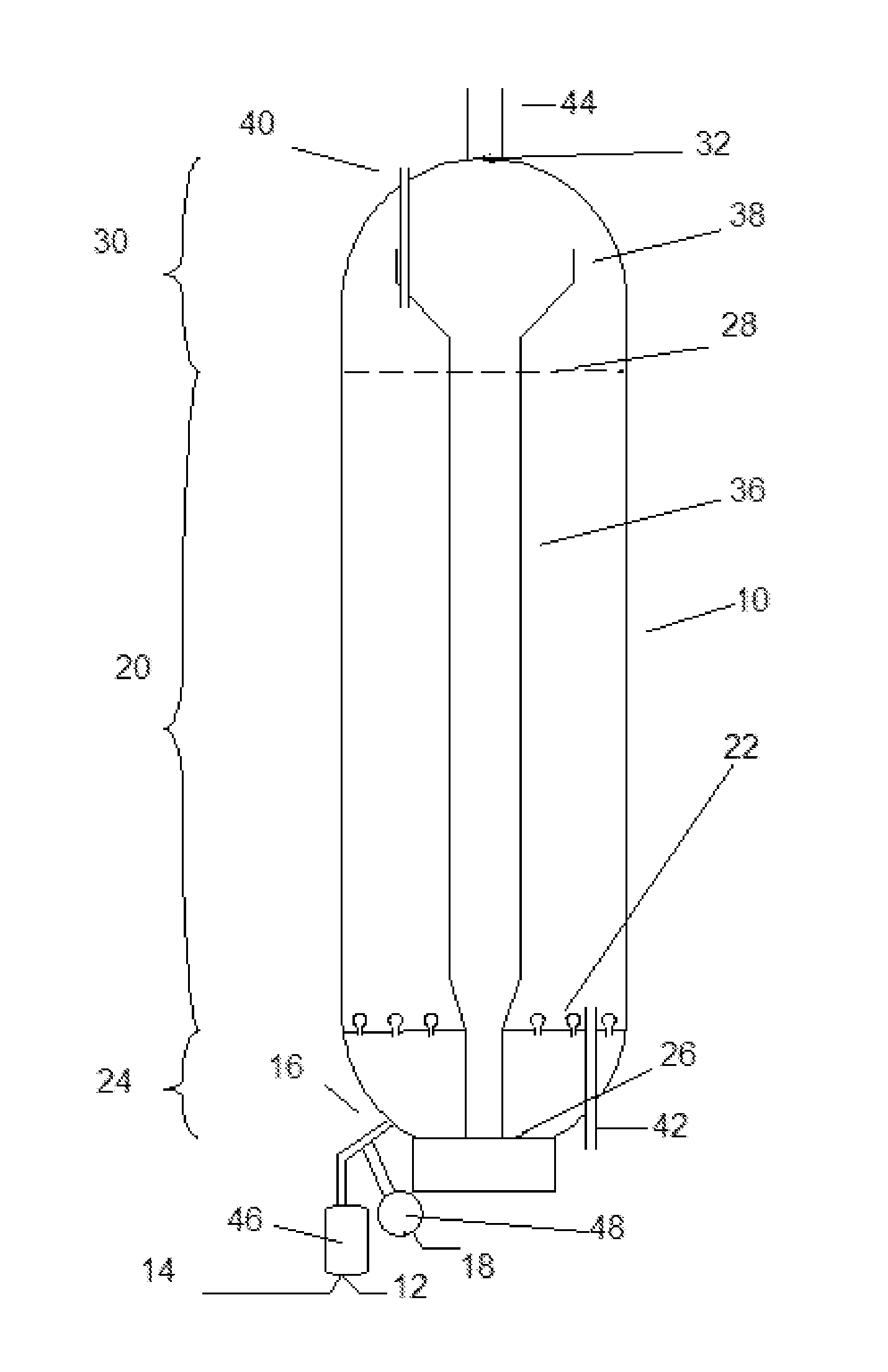Hydroprocessing Catalysts and Methods for Making Thereof
a technology of hydroprocessing catalysts and catalysts, which is applied in the field of catalysts, can solve the problems of heavy oil being particularly difficult to upgrade in refinery operations, difficult to remove, and unstable upgraded products, and achieve the effects of reducing reducing or eliminating the formation of coke precursors
- Summary
- Abstract
- Description
- Claims
- Application Information
AI Technical Summary
Benefits of technology
Problems solved by technology
Method used
Image
Examples
example 1
[0103]A commercially available particulate catalyst from Advanced Refining Technology (ART) was provided as a particulate catalyst. The particulate catalyst had a nominal cross-sectional diameter of 0.04 inch and a length of 0.1 inch to 0.4 inch, and contained 10% by weight molybdenum and 5% by weight nickel on an alumina base. Properties of the particulate catalyst are listed in Table 1.
TABLE 1Particulate CatalystRework MaterialMolybdenum content, wt. %10 wt. %10 wt. %Nickel content, wt. % 5 wt. % 5 wt. %Surface Area, m2 / g288 m2 / g288 m2 / gPore Volume (by mercury 0.724 cm3 / g0.724 cm3 / gporosimetry)Mesopore Volume (by mercury 0.162 cm3 / g0.162 cm3 / gporosimetry in 100-300 A range)
example 2
[0104]The particulate catalyst was dried for 1 hour under nitrogen at 400° F. A 1% dimethyldisulfide (DMDS) solution in heptane was injected for 1 h at 350° F. and at a pressure of 300 psi before ramping the temperature to 450° F. Sulfiding was maintained for 14 hours at these conditions before introducing a 6% DMDS solution and increasing pressure to 800 psi followed by ramping to 650° F., where the temperature was maintained for 2 hours.
example 3
[0105]A sample of the particulate catalyst of Example 1 was ground, and the fraction that passed through a standard 650 mesh screen was collected as rework material. Properties of the rework material are listed in Table 1.
[0106]An unsulfided catalyst slurry containing 92 grams of the rework material and 7562 grams of the diluent blend having properties listed in Table 2 was prepared.
PUM
| Property | Measurement | Unit |
|---|---|---|
| particle size | aaaaa | aaaaa |
| particle size | aaaaa | aaaaa |
| particle size | aaaaa | aaaaa |
Abstract
Description
Claims
Application Information
 Login to View More
Login to View More - R&D
- Intellectual Property
- Life Sciences
- Materials
- Tech Scout
- Unparalleled Data Quality
- Higher Quality Content
- 60% Fewer Hallucinations
Browse by: Latest US Patents, China's latest patents, Technical Efficacy Thesaurus, Application Domain, Technology Topic, Popular Technical Reports.
© 2025 PatSnap. All rights reserved.Legal|Privacy policy|Modern Slavery Act Transparency Statement|Sitemap|About US| Contact US: help@patsnap.com


